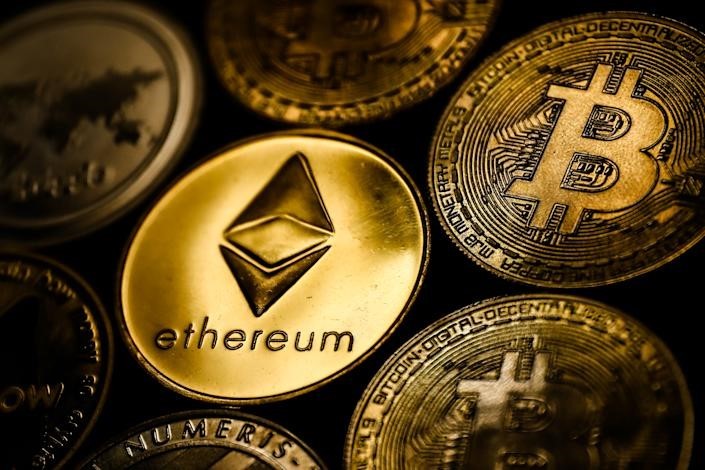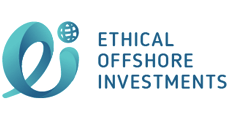Blockchain and NFTs: How to make sense of crypto terminology
The language to describe cryptocurrency trading is often cloaked in jargons
Mon, 11 October 2021
 Photo: NurPhoto via Getty Images
Photo: NurPhoto via Getty Images
Cryptocurrencies such as bitcoin (BTC-USD) and ethereum (ETH-USD) are soaring in value and forecasted to reach new all-time highs. The latest bull run has caused interest in cryptocurrencies to rise from traditional and institutional investors.
However, one obstacle that makes investors hesitate are the unfamiliar acronyms, memes and technical jargon associated with the crypto-sphere.
Many investors follow the maxim of Warren Buffet that you should “invest in what you know… and nothing more”.
So to understand the world of cryptocurrencies investors must not only learn the crypto-equivalent of traditional terminology associated with stocks and bonds, but also a host of new concepts, such as smart contracts, non-fungible tokens (NFTs) and decentralised exchanges (DEXs).
Blockchain technology
Every investor should have a basic understanding of what a blockchain is and why it is a revolutionary technology.
Blockchain technology is the underlying engine that powers all cryptocurrencies. It is a digital form of record-keeping that is tamper-proof, encrypted and decentralised.
This digital data register is completely distributed across a network of computers, or nodes. The technology is revolutionary because the data involved is not stored centrally and so cannot be controlled by any single authority.
It is a ‘trustless’ system where individuals do not have to trust an entity that holds their data at a centrally controlled location.
The system has the potential to make custodial banks defunct, as transactions recorded on the blockchain are automated by set algorithms that are virtually impossible to change once they have been verified by the network.
Smart contracts
Algorithmic programs can be stored on a blockchain that can execute agreements between participants almost instantaneously and without the need for an intermediary to validate the contract.
These ‘smart contracts’ have the power to not only disrupt the world of finance but also transform the legal system.
They are one of the main value propositions of the ethereum network, which was the first blockchain network to allow for the execution of smart contracts.
The difference between a DEX and a CEX
Cryptocurrencies can be purchased in different ways. They can be bought via bank transfer to a centralised exchange (CEX) such as Coinbase (COIN).
Once funds have been added to the exchange users can buy from a list of mainstream cryptocurrencies.
Read more: Could ethereum overtake bitcoin?
An alternative to purchasing and holding cryptocurrencies on a CEX is to use a decentralised exchange (DEX), which hosts a multitude of coins and tokens.
Decentralised exchanges do not store your purchases in a centralised location but send your cryptocurrency purchase to a connected digital wallet, such as a Metamask wallet.
Hot’ wallets and ‘cold’ wallets
A ‘hot’ wallet is an online storage for cryptocurrencies. This can be done on an established exchange wallet, such as Coinbase, or via a browser extension wallet, such as MetaMask.
MetaMask wallets can be used to interact with decentralised exchanges. However, after a multitude of online exchange hacks, where investors lost large proportions of their portfolios, cold storage wallets are considered to be the safest way to store cryptocurrencies.
Cold storage means transferring your crypto-holdings onto a physical device that looks similar to a USB drive – a method that is hack proof.
DeFi and DApps
DeFi, or decentralised finance, is the name given to any activity in finance that is conducted without the involvement of an intermediary, such as a bank.
Most DeFi applications currently reside on the ethereum network, while a DApp, or decentralised application, is a program that runs in a decentralised way on a blockchain. An example of a DApp is Aid:Tech, which links charitable donors to beneficiaries.
What is an NFT?

Non-fungible tokens (NFTs) are unique digital assets that can be traded on exchanges such as OpenSea.
In the last six months, many individual NFTs have sold for upwards of $1m (£740,000) each. An example of this is the NFT by digital artist Mike “Beeple” Winkelmann, which sold for $69.4m at Christie’s in March 2021.
Read more: Non-fungible tokens: What are NFTs and why are they creating such a stir?
Other miscellaneous terminologies that cryptocurrency investors may encounter are words such as HODL, meaning to ‘hold your investment long-term’, and gas-fees, which refer to the price paid to ‘crypto-miners’ for transactions to be registered on the public ledger.
The above article was published by Yahoo Finance on 11 October 2021

The cover image is the property of MarketPlace Fairness, and you can visit their website by clicking HERE
At Ethical Offshore Investments, we only invest in regulated investments, which means we do not provide advice or guidance on Crypto currency assets. However, there are a range of regulated managed funds and ETF’s that invest in companies directly associated with the technology involved with the Crypto market.
This includes companies directly involved in the Blockchain technology, currency storage and Cyber Security.
When investing into these types of fund, we will always get access to the lowest charging version of this fund available on the relevant platform, which ensures that more of the growth stays in our clients pockets.
If you would like to learn more about the wide range of quality funds that are available to investors, click the More Information button below and we will contact you personally.
Sustainable & Responsible Investing – Ethical Business Standards
